Category: edci338 (Page 1 of 2)
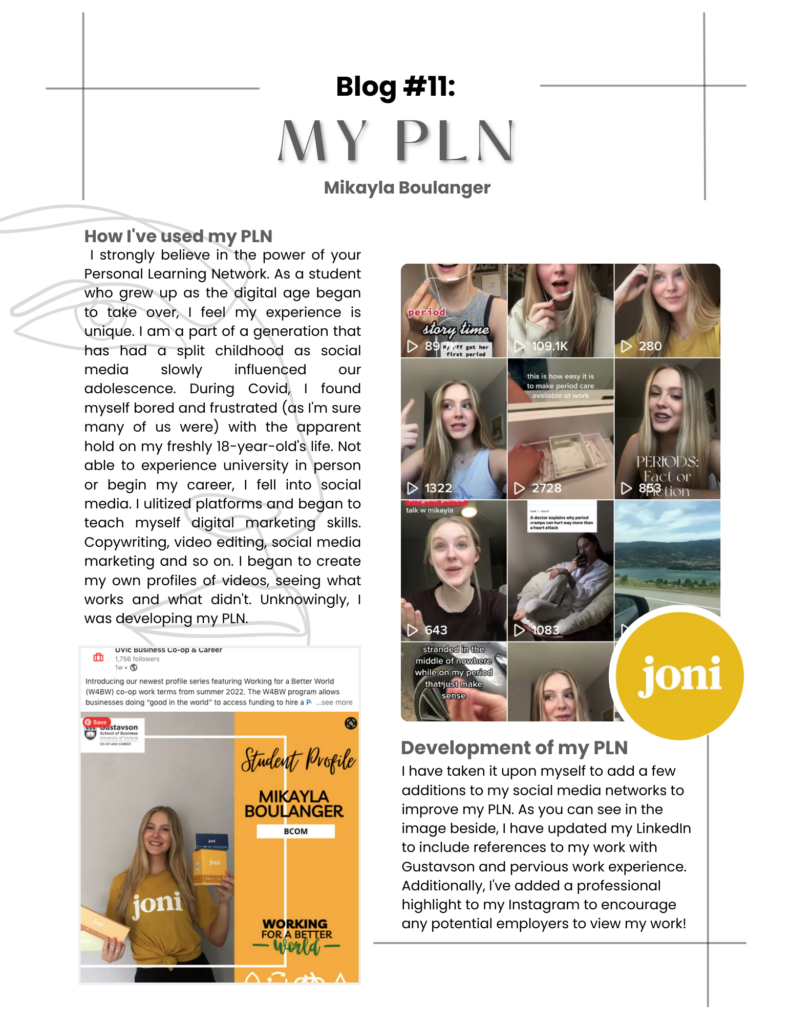
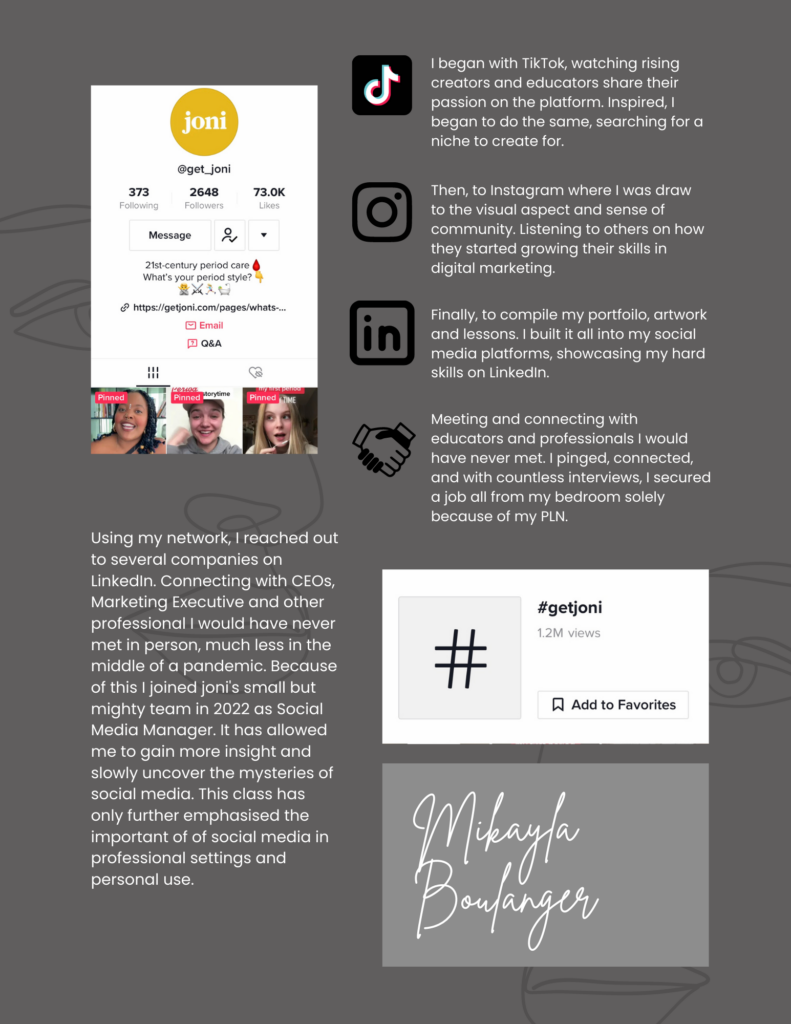
Group Names: Mikayla Boulanger, Caitlin Doraty, Hongyuan Pan, Kevin Song, Sadhik
Below is a PDF document of the presentation slides – Slide Design by Mikayla Boulanger, Content by respective student name per slide
Below is a video recording of our zoom presentation! – Entire Group!
Below is the audio recording of our zoom presentation! – Entire Group
Below is the script of our zoom presentation – by Entire Group!
Below is our Project Outline which includes our concept, rough draft and assignment responsibilities – written by Mikayla Boulanger
Finally, our reference list – by Sadhik, edited/formatted by Caitlin
Can your PLN be used to help professional development post-course?
Absolutely. We watch the Wakelet podcast this week with twin guests, Amy Storer and Dyann Wilson, who both share how they utilize growing media in education. Both guests note that creating an online community full of like-minded peers has helped them grow in their respective fields.
Can your PLN be relied on to open professional opportunities?
Yes! In my personal experience, by utilizing my PLN, I have secured job opportunities and plan to pursue more in the future. I go further in-depth on in my Blog #11 post on how I’ve used my PLN specifically to get a job! I strongly believe that creating a PLN as you go through university and enter the job field is key to future professional relationships. Maintaining a good relationship with your favourite first-year professor could turn into a job opportunity one day.
References:
Wakelet. (2022). The benefits of growing your network & PLN. Youtube. https://www.youtube.com/watch?v=SEa8JgAE_qM&ab_channel=Wakelet
What is Media Literacy?
Digital Literacy Skills defines Media literacy as “a framework to access, analyze, evaluate and create messages in a variety of forms, build an understanding of the role of media in society, as well as [develop] the essential skills of inquiry and self-expression.”
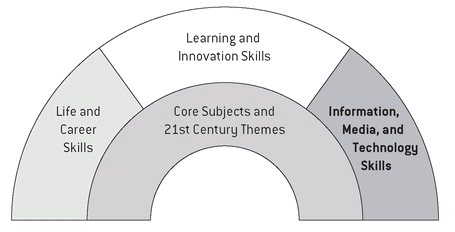
Open dialogues about media literacy and factual information can create conflict; why does this happen?
Since the boom of information over the last 30 years, education is more accessible than ever. Although there are now so many sources and educators, it can be hard to determine what is truly valuable. This week we listen to Julie Smith, a communication professor at Webster University in St.Louis with over 15 years of experience in the field.
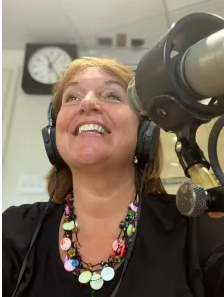
Julie Smith echos this and believes that there is “so much information out there it’s impossible to figure out what’s really meaningful and valid”. Smith references her latest book, ‘Master the Media, on how to navigate media literacy. Reminding students to ask the following questions about media; Who’s the sender? What’s their motive/intent? How is it created? Who profits? What information is left out? Who’s the target audience? (Smith)
What is the benefit of having a PLN that values media literacy?
Having a PLN greatly benefits your media literacy. Julie Smith shares her love of Twitter, laughing “it exposed me to media literate people and I steal ideas from them all the time!” It is so invaluable, Smith can’t even compare it to a dollar amount. Sharing your experience allows for a different perspective and willingness to share new ideas.
References:
Heyjuliesmith. (2022, October 4). Who is Julie Smith? Julie Smith. Retrieved November 15, 2022, from https://heyjuliesmith.com/about-me/
Trilling, B., & Fadel, C. (2012). 21St Century skills: Learning for life in our Times. Jossey-Bass.
Miller, J & Smith, J. (2021, June 6). EDCI 338 – Media Literacy with Julie Smith. YouTube. https://www.youtube.com/watch?v=57r3-aEnci0
How you would curate your social media with a critical public audience?
As we listen to this week’s podcast with guest Sophie Lui, a Global BC Reporter, we get a glimpse of her opinion on how to use your social media with a critical public audience. With over 20 years of experience in journalism and broadcasting, Lui shares that even her in early days with the trusty yellow pages, creating a personal learning network was crucial to getting the best story. She now uses social media to create a supportive community of other like-minded female reporters.
Identify the risks and benefits of engaging with a public audience in a media space – what are the risks for a public figure or person in a position of trust (educator, lawyer, government official)?
A notable public figure with a large audience has great influence and power over those who follow them. It is crucial that anyone of such stature would should the clique warning, “with power, comes great responsibility”. As we have seen in previous years with examples such as Donald Trump, social media is a powerful tool and can easily be weaponized to mislead millions. Attacking media sources, claiming fake truth, when the real truth is that their platform simply disagrees. Leading the “fake news issue [to be] a debate about who gets to define “truth” (McNair 2018). The proper definition of fake news is as follows, “fake news is the promotion and propagation of news articles via social media”(Gu, Kropotov and Yarochkin 2017).
It can be identified by observing any news story with the following steps:
- Speed; How quickly was this story/news written?
- Aggregation; How many sources are this from? Is this a first/second/third-hand recount?
- Monetizing the clickstream; Is this source monetized?
The abuse of power on social media whether is it intentional or accidental is an obvious risk.
Although, the benefits can be as equally monumental. The power of a community and its support can be life-changing. As we have seen with movements such as Black Lives Matter, a cause and change were spreading like wildfire online and truly made a difference.
How to best address negative replies and critiques reflective of your personal values and your employer’s social media policy?
As a public figure, the constant scrutiny of appearance and content is overwhelming. Lui shares a time when her colleague was criticized for her blouse being too low-cut. Her response? To stand up on social media for her peers. She advises the best policy to critique reflective of your personal values, and stand up for yourself when needed but don’t give the haters the satisfaction of letting of responding at other times.
References:
Hirst, M. (2018). The political economy of fake news. In Navigating social journalism: A handbook for media literacy and citizen journalism (pp. 78-100). Routledge. https://doi-org.ezproxy.library.uvic.ca/10.1057/9780230119796
Miller, J., & Lui, S. (2022). In the public eye. Youtube. https://www.youtube.com/watch?v=wfcXgKLzOVM&ab_channel=MILLER
How does social media engage communications?
Prior to digital media, “public broadcasting, newspapers and magazines” were responsible for public communications within the community. This included sharing noteworthy achievements, political campaigns, and current news. Often easily controlled by one party or group of individuals, public opinion could be easily manipulated by a lack of information or influenced by praise. With the rise of digital media, came the endless resource of information from anyone who wanted to share online. While improving education and communication, it also allowed for freedom of information. Jessica Clark shared that she hopes this means that for “the first time in modern democracies, public media will be media both for and by the public” as opposed to “carefully culled op-ed pages aired carefully balanced views but creates limited participation”. Social media allows anyone to communicate and engage in academic discussions on important topics. Trends support this statement, suggesting that “connectivity, participation, and digital media creation will only increase” (Clark).
Aufderheide (2011)
How does social media challenge communications?
Although, this new age also brings new challenges. While freedom of information and speech has seemly become more accessible, the query of corporate greed from monopolies such as Google, Apple and other tech giants influencing digital media is worrisome. Such as the “fears that Apple will make our digital lives easy by taking away our creative choices and Google’s reach into every aspect of our lives” (Clark). Moreover, encouraging people to participate in online debates and discussions poses an additional challenge. A balance is needed between “essential accountability in a healthy society, checking the natural tendency of people to do what’s easiest, cheapest, and their own private interest” (Clark).
Is it inclusive?
To ensure that social media remains an inclusive space, diversity is necessary. This includes not only equal opportunity to access the digital space but, open policies, supporting POC creators/educators and reliable platforms.
Below I’ve included a list of inclusive measures from ‘A New Vision for Public Media Open, Dynamic, and Participatory’ by Jessica Clark and Patricia Aufderheide.
- infrastructures for the new public media”
- providing an accessible and reliable platform for public interaction, • providing a toolset for public participation,
- setting standards and metrics to assess public engagement,
- developing a recommendation engine to identify and point to high-quality media,
- committing staff at local and national levels primarily to building public engagement with media and to partnerships to make it happen,
- tracking emerging technologies and platforms to assess and secure their potential for public media 2.0
What are the benefits of a diverse and inclusive PLN in social media sharing that understands where you are coming from with messaging that impacts the community?
Listening through the podcast with guest, Markiel Simpson, this answer became clear as he shares his experience as a building manager with BC housing. Simpson speaks of his experience and how his own diverse and inclusive PLN in social media has positively influenced his community. He shares that “the autonomy and more power not being bound to an employer in any of these spaces whether it be political or with your advocacy because it’s harder for people to try and hold you down” (Markiel Simpson). Having a positive space online has allowed for opportunities for growth, an objective view and accountability for those in leadership positions.
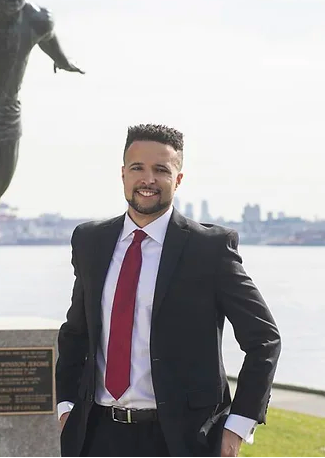
References:
Clark, J., & Aufderheide, P. (2011). A new vision for public media: Open, Dynamic, and Participatory. In S.C. Jansen, J. Pooley, & L. Taub-Pervizpour (Eds.), Media and Social Justice (pp. 55-67). Palgrave Macmillan New York. https://doi-org.ezproxy.library.uvic.ca/10.1057/9780230119796
Miller, J., & Simpson, M. (2021). EDCI – 338 Markiel Simpson. Youtube. https://www.youtube.com/watch?v=rsoDHGaXNNs&ab_channel=MILLER
Smith, C. (2021, March 29). The georgia straight: Anti-racist activist Markiel Simpson strives to ensure that Black Canadians… Markiel Simpson. Retrieved November 28, 2022, from https://www.markielsimpson.ca/post/the-georgia-straight-anti-racist-activist-markiel-simpson-strives-to-ensure-that-black-canadians
Dr. Brad Baker is not only a “proud member of the Squamish Nation but Associate Superintendent of Indigenous Education”, a stepfather, a grandfather, a learner and a teacher. Finishing his doctorate from UBC in 2021, Dr. Baker completed his Ph.D. in Education with a focus in “Indigenous leadership within the field of education”. With over 26 years in education within North Vancouver, he has most recently been appointed as Associate Superintendent of Indigenous Education at the Ministry of Education. He has utilized social media and his professional learning network to make headway in Indigenous issues and grow community by sharing his knowledge and his father’s residential school survivor story.
Community communications go beyond blogs and social media shares; how does a PLN help and hinder the development of thoughts and ideas in education discourse?
PLE is made up of “the tools, artifacts, processes, and physical connections that allow learners to control and manage their learning” (Couros). A Personal Learning Network can be defined as “the sum of all social capital and connections that result in the development and facilitation of a personal learning environment” (Couros). While creating your professional/personal learning network “requires a significant time commitment initially, these losses can be regained quickly through networked efficiencies, enhanced learning experiences, and new opportunities” (Couros). The benefits of having a strong PLN most definitely outweigh the time-consuming nature it may take to build. Additionally, I would like to highlight several strategies I intend to use to grow my own!
PLN Strategies:
Immerse Yourself
Learn to Read Social Media
Strengthen Your PLN
Know Your Connections
PLNs Central To Learning

How do educators create discourse?
During Brad Baker’s EDCI 338 podcast episode, they note that “your professional learning community is really your support system”. Being an open-minded educator will give you the opportunity to create positive discourse and learning. A specific style of teaching is highlighted in Alec Couros’s Developing Personal Learning Networks for Open and Social Learning. Open teaching is a method that encourages learning experiences that are “open, transparent, collaborative, and social” (Couros). This includes activities such as “promotion of copyleft content licenses”, “modelling of openness” and promoting “ learning environments that are reflective, responsive and student-centred” (Couros).
What is the role of social media in education?
Dr. Barker shares his love of social media as he has found an “affinity to community” surrounding Indigenous education as he frequently travels, sharing his story and his father’s as a residential school survivor. Finding openness in the conversation in the history of “inclusion of Indigenous people in British Columbia”. The ability social media brings to connect people across Canada and learn from each other is a significant role that social media plays in education. Being a part of a supportive community you can not only learn from but challenge each other.
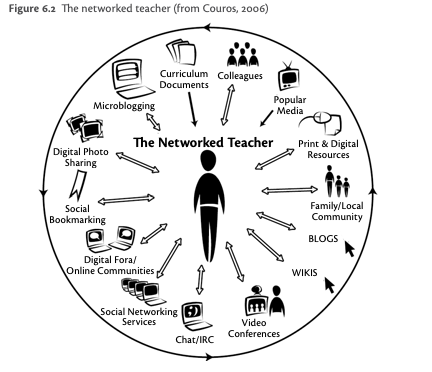
- New connections from global educators
- Building community around your interests
- Learning new teaching perspectives from other educators
- Connecting with colleagues
- Participating in academic dialogue on current news
- Exciting students about learning
- Introducing creative new ways to showcase learning (like a blog!)
What are some problems with social media communications in education settings?
Unfortunately, social media is not always a positive safe place. When attempting to try to participate in healthy dialogue around conversational topics and solutions, not everyone is supportive. Dr. Baker points out the toxic impact of ‘cancel culture’ and its effect on individuals who have made mistakes that they are not given the opportunity to correct. This is mirrored in education when trying to learn new strategies and approaches to problems, but being shut up due to past social media mistakes.
References:
Miller, J., & Baker, B. (2021). Brad Baker EDCI 338. Youtube. https://www.youtube.com/watch?v=C5z8iHxW2n4&ab_channel=MILLER
Rochefort, B. A. (2011). George Veletsianos (ed): Emerging technologies in distance education. Educational Technology Research and Development, 59(6), 130–140. https://doi.org/10.1007/s11423-011-9214-5
University of British Columbia (UBC) Faculty of Education. (n.d.). Land acknowledgements – why do we do them? https://educ.ubc.ca/land-acknowledgements-why-do-we-do-them/
- How diverse is your PLN?
I would like to think I have a diverse and inclusive personal learning network but I also believe that there is always room for improvement and growth. I thoroughly use my international background as a third culture kid to the best of my ability and continue the connections I’ve made in my childhood. Recently, during my co-op with Working for a Better World, I completed a diversity and inclusion course to receive a workplace certification.
Are you learning from a variety of diverse voices and are you expanding your understanding of the views of others?
I often push myself to engage in learning from a variety of diverse voices. In academic discussions, I seek sources from multiple perspectives and sides to understand the topic deeper. It is important to comprehend every angle on an issue in order to have an educated understanding and are able to participate in academic dialogue entirely. Shelley Moore highlights 6 strategies to expand your inclusivity; “The Place Alignment Planner, The Inclusive Purpose Planner, The Replacement Curriculum IEP Planner, The Class Profile, The IEP Evidence Log and The Planning Pyramid 1- Goal Continuums.” I intend to apply these strategies to my own learning, “treat it like your teaching is always developing” (Moore) and challenge my inclusivity.
What is a learning outcome of your PLN and how are you ensuring your exposure to diversity and inclusion?
Shelley Moore emphasizes that “there is no one way of being inclusive” when learning or growing your personal learning network. Social media has become an excellent source of finding diverse voices. Moore shares on her ‘5 Moore Minutes’ podcast that her experience on social media has allowed her to reach an entirely new level of community. She shares “realizing that I had community, and then slowly realizing that my 20K followers were my colleagues and learners that I didn’t know was possible online” (Moore)I strive to remember that inclusion “means everyone” and is not about “integration, a time and place or a destination, but an attitude.
References:
Miller, J., & Moore, S. (2021). EDCI 338 – 20 Minutes Moore. Youtube. https://www.youtube.com/watch?v=KeSV0rUl1bA&ab_channel=MILLER
Moore, Shelley. One Without the Other : Stories of Unity Through Diversity and Inclusion, Portage & Main Press, 2016. ProQuest Ebook Central, http://ebookcentral.proquest.com/lib/uvic/detail.action?docID=4832579.
Created from uvic on 2022-10-03 18:42:01.
- What digital platforms are students currently using to develop their professional network?
(Figure 1.1 – Graph ranks the most popular social media apps based on users in millions)
Facebook, Instagram, Youtube and TikTok remain the most popular digital platforms used in 2022. Likewise, I would argue LinkedIn is the most popular professional network used by students. Upon observation, my V&R map highlighted my professional use of Gmail, Slack and LinkedIn. Many students use LinkedIn to make professional connections with professors, classmates and future employers. Additionally, they use Gmail to communicate regularly and strengthen their professional network.
What could the student consider in expanding their professional learning network?
In-Person Impressions
- Attending a networking event hosted by locals or their university would allow students the opportunity to mingle and meet professionals in person. Furthering their PLN, they would be able to make the acquaintance of local businessmen/women, professors and potential mentors. Making an appearance in person allows for a longer-lasting impression and opens the door to connections online.
Positive Attitude
- A positive open-minded approach always leaves a memorable impression behind
Be Active
- Being an active participant in local community events, charities and meetings let members notice your appreciation for community involvement
Have an Online Portfolio
- Make sure your online profiles reflect the work you’ve done or are passionate about. Having it easily accessible allows future employers or recruiters interested in contacting you. This ties into Blog #2 and what your digital identity reflects about you.
How do data privacy and security limit and/or promote a PLN?
(Figure 1.2 – Privacy & Surveillance Quiz Responses)
Above are my self-assessment quiz responses from https://digitaltattoo.ubc.ca/quizzes/privacy-and-surveillance/ of my knowledge of Privacy and Surveillance. It is important to be self-aware of privacy risks around you in order to protect your PLN. Being conscious of data breaches and making smart decisions will help protect you. Such as: making sure you don’t access sensitive information like online banking while on public wifi, using unique passwords for each website, being mindful of location settings while posting content, etc.
In your network how can you create a digital identity/ reputation?
Highlighting the importance of Having an Online Portfolio as mentioned above. Your digital identity should reflect in your social media presence. Personally, my I view my Instagram as a creative expression of my abilities to create video/media content. When potential brands view my page I want them to view my content as a reflection of my skills. Keeping your media up to date and highlighting professional achievements is an excellent way to assemble a positive reputation.
How did pivots to work-from-home during the COVID-19 pandemic change how we should consider our social media connectivity and professional balance?
During the peak of isolation due to COVID-19, I found myself deeply immersed in social media. Statistics Canada noted that “over 90% of 15 to 34 years of age indicated that they had done more activities online” during the pandemic. Increasing their leisure time spent online shopping, posting content and video calling. So much so that “57% of individuals 16 years of age and older increased their use of video calls with family and friends during the pandemic”. With the transition to many experiencing working from home for the first time, the preference for a 9-5 office job is slowly diminishing.
V&R Map:
References:
Bilodeau, H., Kehler, A., Minnema, N. (2021). Internet use and COVID-19: how the pandemic increased the amount of time Canadians spend online. Statistics Canada. https://www150.statcan.gc.ca/n1/pub/45-28-0001/2021001/article/00027-eng.htm
White, D.S., & Le Cornu, A. (2011). Visitors and residents: a new typology for online engagement. First Monday, 16. https://firstmonday.org/ojs/index.php/fm/article/view/3171/3049
http://experimental.worldcat.org/vandrmapping/assets/documents/VRAMappingInstructions.pdf
The Digital Visitor and Resident Continuum White. D. (2017).
V and R Mapping. Retrieved from https://daveowhite.com/vandr/
PLN space through Social Media platforms (Developing awareness)
Privacy, Ethics & Security in Digital Spaces Developing Awareness of Privacy https://digitaltattoo.ubc.ca/quizzes/privacy-and-surveillance/ Regan, P., & Jesse, J. (2019).
Recent Comments